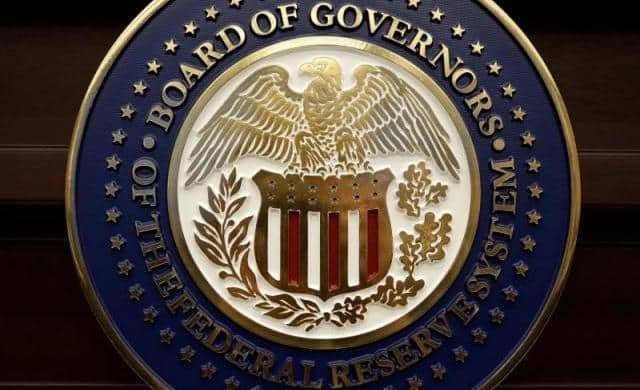Gold Silver Reports – Federal Reserve officials followed through on an expected interest-rate increase and raised their forecast for economic growth in 2018, even as they stuck with a projection for three hikes in the coming year.
“Averaging through hurricane-related fluctuations, job gains have been solid, and the unemployment rate declined further,” the Federal Open Market Committee (FMOC) said in a statement on Wednesday following a two-day meeting in Washington. Inflation will remain below the Fed’s 2% goal in the near term but “stabilize” around the target in the medium term, the central bank said.
In a key change to the statement, the Fed omitted prior language saying it expected the labour market would strengthen further. Instead, Wednesday’s missive said monetary policy would help the labour market “remain strong”. That suggests Fed officials expect improvement in the job market to slow.
The yield on 10-year US treasury notes was little changed after the Fed announcement, as was the Bloomberg Dollar Spot Index.
The 7-2 vote for the rate move, the Fed’s third this year, raises the benchmark lending rate by a quarter percentage point to a target range of 1.25% to 1.5%. In another move that could tighten monetary conditions, the Fed confirmed that it would step up the monthly pace of shrinking its balance sheet, as scheduled, to $20 billion beginning in January from $10 billion.
Through the policy adjustments and the statement, the Fed continued to seek a delicate balance between responding to positive news on growth and unemployment that encouraged gradual tightening, while signalling caution due to persistently weak inflation readings that have befuddled policy makers.
That puzzle continued earlier Wednesday when labour department data showed consumer inflation, excluding food and energy, was lower than expected at 1.7% in the 12 months through November.
“Hurricane-related disruptions and rebuilding have affected economic activity, employment and inflation in recent months but have not materially altered the outlook for the national economy,” the Fed said. Repeating language used since June, the FOMC said that “near-term risks to the economic outlook appear roughly balanced, but the committee is monitoring inflation developments closely”.
In the latest set of quarterly forecasts released on Wednesday, the median estimate for economic growth next year jumped to 2.5% from 2.1%. It wasn’t immediately clear how much of the change reflected confidence that the tax-cut legislation moving through Congress will boost growth, or other factors such as pickups in business spending and global growth.
At the same time, the committee’s median forecast for long-run expansion was unchanged at 1.8%, suggesting officials aren’t yet convinced the tax package will significantly affect the economy’s capacity for growth.
Minneapolis Fed president Neel Kashkari and the Chicago Fed’s Charles Evans both dissented against the interest-rate decision, preferring to leave them unchanged. It was the first meeting with more than one dissent since November 2016; Kashkari’s dissent was his third this year. Evans dissented for the first time since 2011.
Fed chair Janet Yellen will hold what’s expected to be her last post-meeting press conference at 2:30pm If confirmed by the US Senate, Fed governor Jerome Powell, President Donald Trump’s nominee to succeed her, will take over when her four-year term as chair expires on 3 February.
That follows a solid rebound for the expansion since a disappointing start to 2017. Gross domestic product grew at more than a 3% annualized pace in both the second and third quarters, and is on track to expand in the fourth quarter by 2.9%, according to the Atlanta Fed’s GDP-Now tracking estimate.
Despite the upgrade in near-term growth expectations, policy makers left the number of hikes projected for 2018 effectively unchanged. The median forecast pegged the federal funds rate at 2.1% at the end of next year.
That could, in part, reflect lingering concerns over sluggish wage and price gains. The Fed’s preferred gauge of inflation, based on consumer spending, gained just 1.6% in the year through October.
Weighed against unemployment, which has dropped to a 16-year low at 4.1%, that weakness has puzzled economists and made some policy makers declare the Fed should hold off on additional rate increases until prices respond more briskly.
The committee lowered its median estimate for the unemployment rate, expecting it to hit 3.9% by the end of 2018, compared with a September projection of 4.1%.
Read More: Gold Traders Are ‘Jaded’ to Global Fears Ahead of Expected Fed Hike
The committee left its median estimate for the lowest sustainable level of long-run unemployment at 4.6%, suggesting that officials still expect the drop in joblessness to eventually boost inflation. Forecasts showed little change in the inflation outlook over the next three years.
Yellen is expected to chair the committee’s next meeting on 30-31 January for what will be her last FOMC gathering of her time on the committee spanning three decades as chair, vice chair, San Francisco Fed president and governor. – Neal Bhai Reports
